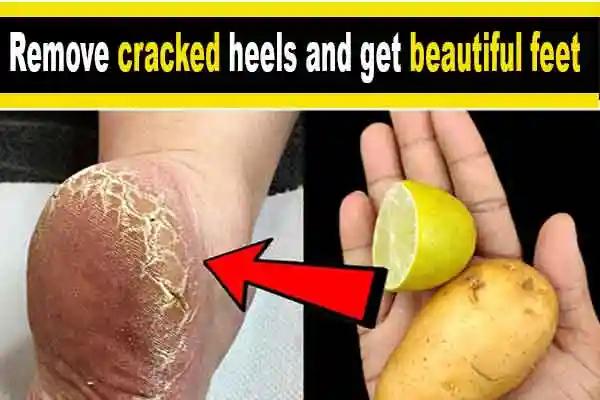Are you tired of dealing with painful fissures on your feet? These cracks or tears in the skin can not only be uncomfortable, but they can also make it difficult to walk and wear certain shoes. But fear not, as there are ways to treat these pesky fissures and step into smoothness. In this article, we will discuss 5 effective methods for treating fissures on your feet, so you can say goodbye to pain and hello to silky smooth heels. So kick off your shoes

Fissures on feet are painful conditions that can affect anyone. They can be caused by a number of different factors, including infection, trauma, and dryness. While the symptoms of fissures on feet can vary from person to person, they typically include itchiness, redness, and flaking skin. In severe cases, these fissures can lead to cracking and bleeding.
reason for cracked heels
In some cases, fissures on feet can be caused by underlying medical conditions such as eczema, psoriasis, diabetes, or thyroid disease. It is also possible for some individuals to develop cracked heels due to wearing ill-fitting shoes or having an imbalance in the muscles and ligaments of the feet. While it is important to treat the underlying medical condition, it is also important to keep the feet moisturized and protect them from further damage. Applying a moisturizing cream or ointment to the affected area can help to keep the skin hydrated and reduce the risk of infection. The roughness and cracking of the feet are one of the problems facing Man. which causes him a lot of embarrassment that is why care must be taken to treat the roughness and crack heel treatment, and this is until you get two soft feet, especially for women. and these cracks may be accompanied by some pain and redness and in this case, you must resort to a doctor so that the treatment is done properly.
5 Excellent Remedies For fissures on feet
Fortunately, there are a number of effective remedies available for treating cracked heels. The following are five excellent remedies for treating cracked heels: moisturizing the feet, using petroleum jelly, using a pumice stone to remove dry skin, wearing open-toed sandals, and avoiding harsh soaps and detergents. Moisturizing the feet is essential for preventing and treating cracked heels. Petroleum jelly can be used to soften and seal in moisture, while a pumice stone can be used to remove dry, dead skin.
How can I permanently get rid of cracked heels at home?
cracked heel treatments are also known as (cfoot fissures) which can cause inconvenience but sometimes lead to more serious problems if neglected. Treating heel cracks requires you to give your feet a little care, starting with moisturizing at least twice a day. Look for thick moisturizers.
Some moisturizers contain skin laxatives, including urea, salicylic acid, or alpha hydroxy acid, which help exfoliate dead skin and crack heel treatment. It may cause a little tingling or itching.
The cracks of the feet can be treated with the recipe of potatoes and lemon, which helps to moisturize the skin and also works to get rid of dead skin.
In this recipe, we need one grated potato containing an enzyme called “catecholase” that helps lighten the skin and get rid of cracked heels. You can also use potato juice in order to reduce cracked heels that negatively affect the aesthetics of women’s feet, and potatoes also work effectively against aging and can gently exfoliate your skin.
Lemons have the uncanny ability to naturally lighten the skin through the acids they contain, including cracked heels and age spots. Add a teaspoon of salt add a little toothpaste mix the ingredients well and massage the feet with this recipe, focusing on cracks thanks to watching this video.
What is the burning of foot at night?
burning of foot at night this sensation is common at night and the intensity of heartburn varies from mild pain to a feeling of severe acute pain the main cause of the burning sensation is damage to the nerves and is often caused by diabetes, in addition to several other causes.
The burning sensation in the feet is often accompanied by redness, swelling, and increased foot temperature, and general fatigue and excessive stress are the most common causes of burning feet, according to a site report.
Causes of burning of the foot at night
- Vitamin deficiency B 12
Lack of Nutrition has serious effects that should not be ignored, as vitamin B12 plays a key role in many body processes, including the functioning of the nervous system, so if you have burning feet, it may be due to vitamin B12 deficiency.
- Hypothyroidism
An imbalance of thyroid hormones can adversely affect blood flow, and as a result, you can experience swelling due to water retention causing burning feet.
- Causes of Burning Foot
Inflammation of the blood vessels
Due to vasculitis, blood circulation may be affected when the legs do not receive a normal flow of blood which may cause a burning sensation in the feet.
- High blood pressure
High blood pressure can directly cause burning feet at night to interfere with blood circulation
- Accumulation of toxins
Any overdose of vitamin supplements (mainly vitamin D6) or heavy metal poisoning can damage peripheral nerves and blood vessels, and this can be one of the causes of pain and swelling in the feet.
Do not neglect cracked or dry heels, because over time they can produce deep cracks that increase the risk of infection. If personal foot care steps don’t help you, talk to your doctor about other treatment options.
Abstract
Fissures on feet can be uncomfortable, painful, and even dangerous condition if not treated properly. These cracks, which can appear on the heels, sides, or even the toes, can cause bleeding and infection, leading to additional medical complications.
Fortunately, there are a variety of treatments available to help manage the pain and discomfort of foot fissures. With proper care and attention, it is possible to keep the area clean and moisturized to help prevent infection and heal the fissures.




